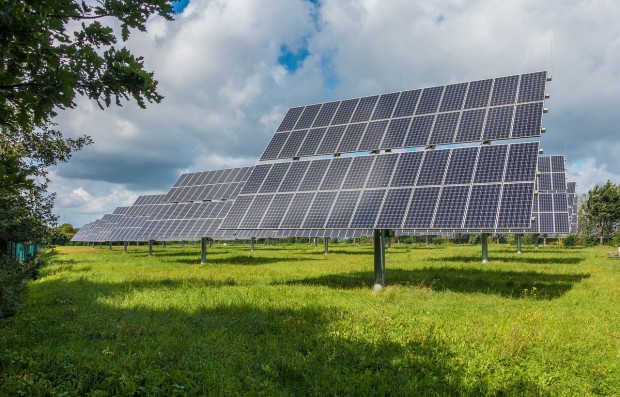Different initiatives have been taken to alleviate the environmental impact of carbon emissions. Recently, Ireland disclosed its strategy for constructing a solar energy farm with a capacity of 190 megawatts (MW), providing light to 30,000 houses in Ireland.

(Photo : Pixabay/ Sebastian Ganso )
Blackhal Solar Farm
GP Joule, a German energy business, has presented planning applications to Meath County Council for ten years to obtain clearance for the solar farm. The project, known as the Blackhall solar farm, has the potential to become one of the most significant solar ventures in the country, with a projected cost of €200 million or almost $220 million if it receives planning approval.
With a total area of 205 hectares and spanning across three different land parcels, the solar farm that has been suggested can harvest renewable energy. Moreover, by reducing carbon dioxide emissions by about 80,000 tons per year, the Blackhall Solar Farm has the potential to generate enough electricity to power around 30,000 houses in Ireland. The corporation also emphasized in the filings that to attract sufficient capital, it must have a lifespan of 40 years.
On the other hand, GP Joule's plan submission comes after the completion of the 200MW Ballmacarney solar farm in County Meath by Statkraft of Norway in the year 2021. It has been reported that Statkraft Ireland is interested in pursuing several other wind farm and solar farm projects inside the country.
By the year 2030, Ireland has committed to achieving its goal of generating 80% of its electricity from renewable sources. At the most recent onshore Renewables Electricity Support Scheme (RESS) auction, funding was granted to 20 solar farm facilities with a combined capacity of 497 MW. In addition, future RESS bids are reportedly expected to take place throughout this year.
Also Read: Egypt Plans to Develop 1.1GW Wind Energy Project with $1.5 Billion Investment
Solar Projects in Ireland
Ireland is currently experiencing a solar revolution that is extremely unlikely to happen. Solar has become the nation's most rapidly expanding renewable energy source in a relatively short span. Around 60,000 private residences have solar panels installed on their rooftops, and each week, 500 dwellings are connected to the power.
Since then, households, businesses, and large worldwide solar firms have made a record number of electrical connections. This provides evidence that many beneficial circumstances behind this began to take effect throughout the years 2020-2021.
The extraordinary expansion and significance of solar energy in reducing our reliance on fossil fuels and our fragile lack of energy security have been traced by the Irish Solar Energy Association (ISEA). Accordingly, more than 600,000 megawatt hours of electricity are being generated annually by the country's expanding solar capacity. This amount of electricity is sufficient to provide a city of Belfast's size! Thus, an annual reduction of 202,000 tonnes of carbon dioxide is achieved, equivalent to driving a fossil-fueled vehicle for 1.4 billion kilometers.
Furthermore, on a bright and beautiful day in May of 2023, solar energy delivered 10% of the nation's electricity. At the same time, technological advancements are being made consistently, driven by both rising levels of efficiency and inventiveness. Thousands of houses can reportedly transfer extra electricity from their systems onto the grid and receive payment, implying that even a dull Irish day can yield significant amounts of solar power.
Related Article: Solarpack Starts Construction For Peru's Largest 300MW Solar Project







